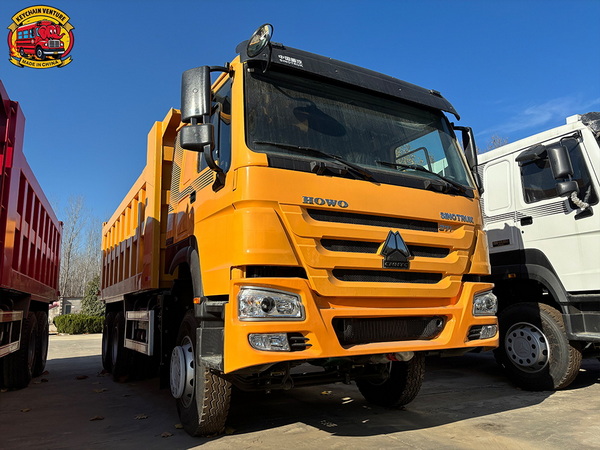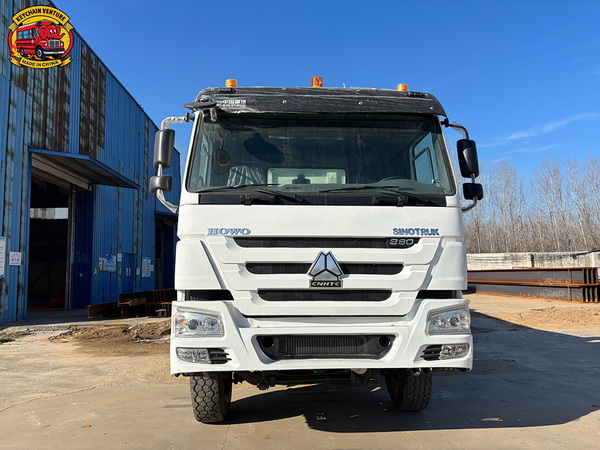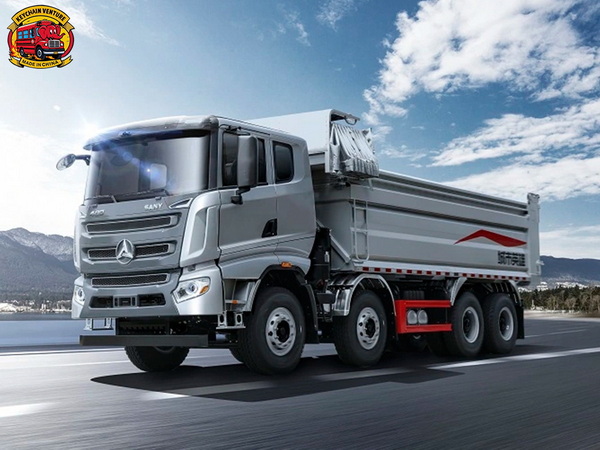Views: 222 Author: Amanda Publish Time: 2025-10-27 Origin: Site








Content Menu
● What is Dump Truck Capacity?
● Common Dump Truck Capacities
● How to Calculate Dump Truck Cubic Feet
● Factors Affecting Dump Truck Capacity
>> Vehicle Specs: GVWR & Axles
● Practical Applications: Dump Truck in Action
>> Construction
>> Landscaping
>> Municipal and Industrial Work
● Modern Innovations in Dump Truck Design
● Step-by-Step Example: Calculating Haul Loads
● Selecting the Right Dump Truck for Your Business
● Frequently Asked Questions (FAQ)
>> 1. How do you convert dump truck capacity from cubic yards to cubic feet?
>> 2. What affects a dump truck's volume capacity?
>> 3. Can dump trucks fill up to their maximum cubic feet every time?
>> 4. How can I avoid overloading my dump truck?
>> 5. Why do some dump trucks have rounded beds?
Dump trucks are a cornerstone of material transport and construction worldwide, including for suppliers like KeyChain Venture Co., Ltd. Whether hauling dirt, gravel, sand, or industrial waste, understanding how to calculate and maximize cubic foot capacity is essential for efficient logistics, project planning, and cost control. This article offers an in-depth exploration of Dump Truck capacity in cubic feet, highlighting calculation methods, influential factors, types of trucks, application scenarios, and safety considerations—all vital information for both industry professionals and curious readers.

Dump truck capacity refers to the maximum volume and weight of material the vehicle can safely haul. Capacity is typically listed in cubic yards, but converting this measure to cubic feet gives a more precise understanding for material estimation and logistics. One cubic yard equals 27 cubic feet, making dump truck capacity conversion straightforward but critical.[1][5][8]
- Precision: Many projects involve detailed material estimates, requiring measurements beyond standard cubic yards.[5][8]
- Material Matching: Not all dump trucks are alike—sometimes cubic feet help match the truck to precise project needs.
Dump trucks come in several classes, each designed for specific tasks and load volumes:
Truck Type | Cubic Yards | Cubic Feet |
Standard Dump Truck | 10–12 | 270–324 |
Super Dump | 14–16 | 378–432 |
Articulated Dump Truck | 25 | 675 |
End Dump/Belly Dump | 29–32 | 783–864 |
The above figures demonstrate the range in dump truck capacities, reflecting differences in size, configuration, and purpose.
The core formula for determining cubic feet capacity is:
Length × Width × Height (in feet) = Cubic Feet
Take the inside measurements of the dump bed, multiply them, and obtain the total volume. For example, a bed measuring 12 feet long, 7 feet wide, and 5 feet high yields:
12×7×5=420 cubic feet
To convert cubic feet to cubic yards (the industry standard), simply divide by 27:
420÷27=15.56 cubic yards
This process ensures accurate material estimation and helps prevent overload or underutilization.
- Measure in inches if needed, multiply length × width × height, then divide by 46,656 to convert from cubic inches to cubic yards.[7][1]
- Consider manufacturer manuals and payload tables for exact vehicle specifications.
A dump truck's usable volume can differ depending on several variables:
- Dense, heavy materials (like gravel or wet sand) can quickly reach the truck's legal weight limit before filling up the entire volume.
- Lighter materials (such as mulch) may fill the bed completely without breaching weight restrictions.[2][3]
- Traditional rectangular beds provide maximum space.
- Rounded or semi-elliptical beds may slightly reduce usable volume but allow easier material unloading.[8]
- Hoist mechanisms and bed liners can further influence the precise capacity available.
- Gross Vehicle Weight Rating (GVWR): The maximum legal weight a truck can carry, including its tare (empty) weight and payload.[3][4][7]
- Axle Count and Arrangement: More axles mean greater capacity and better load distribution for heavier hauls.[5][8]
- Government rules restrict axle weights, total vehicle weights, and required load securing methods for safety and environmental compliance.[2][7]
- Local road limits may further influence the load you can carry, especially in cities or on bridges.

Dump trucks showcase versatility in many industries:
- Soil and gravel hauling for site grading, foundation work, and excavation.
- Quick transport and disposal of unwanted fill material.
- Topsoil, mulch, and decorative stone delivery and spreading.
- Clearing and compost transport for residential and commercial projects.
- Snow removal in urban environments.
- Hauling demolition debris and industrial waste to recycling centers.
- Mining and quarry operation with gigantic articulated dump trucks.
- Agricultural applications for silage, manure, grain, or produce movement.
Operating and loading dump trucks safely remains paramount:
- Always check load distribution to avoid uneven loads or rollover risks.
- Verify weight limits, GVWR, and payload before dispatch to prevent vehicle stress or legal issues.[6][3]
- Secure loads with tarpaulins or covers and check for local securement laws.
Regular inspection and preventive maintenance reduce breakdowns and ensure sustained productivity.
Recent advances have improved dump truck performance and safety:
- Enhanced chassis designs withstand higher impact forces and rough terrain.[7]
- Automated bed liners and hydraulic systems simplify unloading and reduce operator injury risk.
- Load sensors and telematics enable real-time monitoring of material weights and volumes.
Imagine a construction project requires moving 1,000 cubic yards of fill dirt. Using a standard dump truck (12 cubic yard capacity):
1,000 cubic yards÷12 cubic yards/truck=83.3 truckloads
This calculation lets planners order material efficiently, schedule deliveries, and minimize cost overruns.[2]
Choosing a dump truck involves matching hauling requirements to truck specifications:
- Assess volume and weight needs based on the materials you transport most frequently.
- Consider local infrastructure—city deliveries may require smaller, more agile trucks; remote or off-road projects need bigger, more robust vehicles.
- Factor in regulatory restrictions, available storage, and total cost of ownership.
Consulting experts or dump truck suppliers like KeyChain Venture Co., Ltd. can provide tailored advice to maximize efficiency and safety.
Determining how many cubic feet are in a dump truck is essential for business owners, contractors, and logistics coordinators aiming for seamless and productive operations. By grasping calculation methods, material considerations, vehicle specifications, and regulatory frameworks, you ensure each delivery is cost-efficient and safe. Dump trucks, with their variable capacities and advanced innovations, remain a crucial solution for bulk material transport in the modern world.

Answer: Multiply the reported cubic yard figure by 27. For instance, a dump truck with a 10 cubic yard bed contains 270 cubic feet of volume.[1][5]
Answer: Factors include material density, internal bed dimensions, body style, chassis strength, axle configuration, and legal limits.[3][7]
Answer: Not always. Heavy, dense loads may reach the truck's legal weight limit before filling the bed, while lighter loads can utilize the full volume.[5][2]
Answer: Know your vehicle's GVWR, measure payload weight carefully, check local road regulations, and inspect loads before transport.[3][2]
Answer: Rounded dump beds aid cleaner unloading and less sticking of materials, but they may reduce overall cubic foot capacity compared to traditional flat bed designs.[8]
[1](https://www.lynchtruckcenter.com/manufacturer-information-how-much-can-a-dump-truck-carry.html)
[2](https://atlantadumptruckhauling.com/how-to-calculate-dump-truck-load-capacity/)
[3](https://liningsinc.com/3-tips-for-calculating-dump-truck-capacity)
[4](https://sidedumpindustries.com/understanding-dump-truck-hauling-capacity/)
[5](https://www.know-howequipment.com/industry-news/dump-truck-load-capacity-a-comprehensive-overview.html)
[6](https://www.superdumps.com/calculators/weight_calculator/)
[7](https://www.coopskw.com/learn-about-dump-truck-capacity/)
[8](https://municibid.com/blog/calculate-dump-truck-capacity)